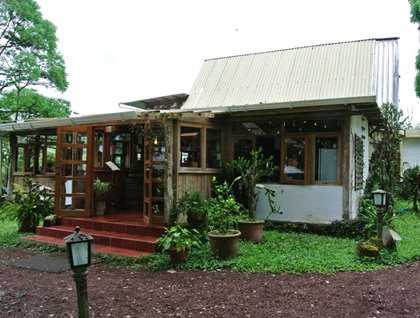We have spent more than half of the week isolated from civilization, and we have enjoyed the feeling of being just us, one with nature. Young and active volcanoes have dominated the scenery, and we feel reticent to leave them. But Santa Cruz Island is a must as well. Right in the middle part of the archipelago it has its own charm and species, the favorite being, of course, giant tortoises.
This is also our opportunity to have a taste of life in the Galapagos. About 15,000 people live on the island, which is the most populated of the four inhabited ones.
As we land at the main dock of the National Park Service, Puerto Ayora is waking up for its daily routine. Kids get their buses to go to school, women and men ride bicycles to reach their jobs, and shops begin to open doors to visitors. And we enjoy every detail.
At the breeding center we learn about the great conservation efforts in the Galapagos, like the thousands of giant tortoises that have already been repatriated to their home islands.
On our way to the highlands we pass by a sugar cane press, to see how juice and alcohol are obtained from this true grass (family Poacea, same for wheat, maize and rice). There are at least 37 species of sugar cane, which originated from South East Asia, India and New Guinea. Around the eighth century AD, Arab traders introduced sugar from South Asia to the other parts of the Abbasid Caliphate in the Mediterranean, Mesopotamia, Egypt, North Africa, and Andalusia. Christopher Columbus first brought it during his second voyage to the Americas; initially to the island of Hispaniola (modern day Haiti and the Dominican Republic). When did it get introduced to the Galapagos? Nobody knows for sure, but it is grown in farms located in the humid areas, of the 3% of land which is not National Park.
After lunch we visit a location in the migratory route of giant tortoises, where we encounter dozens of them, roaming through grass, unaware of our presence. This is one of the largest kinds of tortoises in the Galapagos, and for sure, one of the healthiest populations.
Once on board and after dinner we are entertained by a group of musicians and dancers. Their compositions are a mix of sounds from the Andes, and also happy rhythms born in the coastal regions of the Americas. Music triggers thoughts: our culture is the result of entangled events connected through centuries of trading, injustice, pain, and love. The first slaves were brought to the Americas to work the sugar fields; profits, for the most part, migrated away from this continent. With people from Africa we got a myriad of rhythms, from Europe the sweetness of guitars, from the indigenous populations in the Andes, pipes. Today we have recognized how Galapagos people, as all Latin-Americans, have a rainbow of ethnicities and traditions running through our veins. We tasted it in the sugar cane, we felt it dancing with the band on board, and saw it in each smile and face of citizens from town. We are the result of the encounter of many worlds, and should always remember how and why. In the meantime, tortoises, immune to it all, keep on their daily existence.









